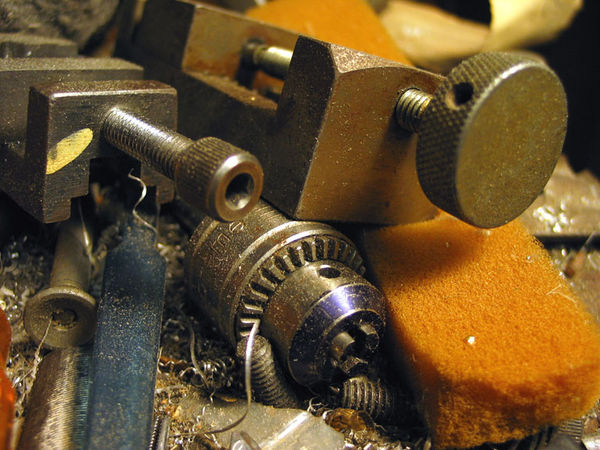How many megapixels is enough?
Apr 19, 2012 07:34:44 #
Lately, all the discussion with the new Nikon camera's has been about, among other things, increasing megapixels, and I am wondering, is increasing the megapixel count on a sensor that is not increasing in size, really good? I was told in the past that over 12 megapixels on a standard size sensor is just overkill. I shoot with a D7000 which is 16.2 mega's, before that with a D60 that was 10.2, am I missing something here? Does it really improve the image and light absorption that much to pile that many more little light absorbers in the same small area? Help me out here, I like my D7000, and the pic's it produces, am I becoming a technological dinosaur? Thanks for the explanation
Apr 19, 2012 09:55:52 #
Just ask yourself, how many do I need?
What you are shooting will justify the need or not. Technology has made major strides since the "12MP is enough" theory.
One word of caution, major MP sensors will definitely show you the flaws in cheaper lenses. Consider that before upgrading. Your D7000 has EXACTLY the same pixel density as the D800, so you are not becoming a technological dinosaur, the D800 sensor is just twice as big is all.
What you are shooting will justify the need or not. Technology has made major strides since the "12MP is enough" theory.
One word of caution, major MP sensors will definitely show you the flaws in cheaper lenses. Consider that before upgrading. Your D7000 has EXACTLY the same pixel density as the D800, so you are not becoming a technological dinosaur, the D800 sensor is just twice as big is all.
Apr 19, 2012 10:08:49 #
Thanks MT, I appreciate your response, and what you said makes sense to me!! Have a great day!!
The Cornman!!
The Cornman!!
Apr 19, 2012 10:12:39 #
PS to my other memo, I basicly use the same lenses as you do, (I don't have a sigmonster however!!), so I think I am good. Thanks again for sharing your knowledge!!
Apr 19, 2012 10:22:42 #
docrob
Loc: Durango, Colorado
[quote=Cornman]Lately, all the discussion with the new Nikon camera's has been about, among other things, increasing megapixels, and I am wondering, is increasing the megapixel count on a sensor that is not increasing in size, really good? I was told in the past that over 12 megapixels on a standard size sensor is just overkill. I shoot with a D7000 which is 16.2 mega's, before that with a D60 that was 10.2, am I missing something here? Does it really improve the image and light absorption that much to pile that many more little light absorbers in the same small area? Help me out here, I like my D7000, and the pic's it produces, am I becoming a technological dinosaur? Thanks for the explanation[/quote -
short answer: No 12 - 16 mp just fine
short answer: No 12 - 16 mp just fine
Apr 19, 2012 10:58:37 #
A friend of mine is a professional (very successful) photographer who produced amazing photos with "just" 6.1. She routinely blew her photos up to 20X24 and they were fabulous. I think the person taking the pictures is the most important element. All the pixels in the world won't make up for poor technique.
Apr 19, 2012 11:44:11 #
Most consumer grade lenses can't resolve enough detail to take advantge of 36 megapixels. That's like putting a 4 cylider in a Maserati. Unless you are willing to spend big dollars for professional lenses and have a need for either huge enlargements or tremendous crops, there is no need to upgrade.
Apr 20, 2012 08:15:06 #
I own a sign company and do a lot of digital printing. File size and resolution is a daily issue. These are two separate ideas and I will not go into that here. To answer the original question, work backwards. If you are only displaying your pictures on a monitor, then the file size and resolution do not matter very much. Whatever you shoot will have more pixels and resolution than your monitor can display. That is why cheap cameras, cell phones and tablets have pictures that look so good.
However, if you want prints, then file size matters but bigger is not always better. To keep things simple, I will ignore cmyk printing and stick to rgb. The eye resolves about 150 dpi. Therefore, at normal viewing distance, you probably will not see the difference between 150 and 300 dpi, ceteris paribus. In traditional photography, the normal viewing distance is the diagonal distance of the print. Let us look at a specific example, an 8x10 print. The uncompressed file size will be 8x10x150x150x3 or 5,400,000 pixels or 5.4 megapixels. The 3 is in there because of the three colors in rgb. If you want to see how sharp your print will be, go to Photoshop, resize it to print size and then view it as print size.
If you view different size prints of the same picture at the proper viewing distance, then they will all look the same. The bigger the print, the farther away but just as sharp to the eye. Stick your nose into a big print and you certainly will see unsharpness.
This presumes you are using a mid-quality lens. If you are using a ps camera of any type, the lens quality is lower and this formula probably gives a bigger file than you need. If you want bigger prints, then at some point, you should consider a better lens. Remember, that while there are compelling technical reasons for larger files and sensors, they are mother's milk to marketers. Bigger sensors, bigger sales and you know what suckers we photographers are the "new and improved". What marketer is not going to say bigger is better and play to your insecurities.
However, if you want prints, then file size matters but bigger is not always better. To keep things simple, I will ignore cmyk printing and stick to rgb. The eye resolves about 150 dpi. Therefore, at normal viewing distance, you probably will not see the difference between 150 and 300 dpi, ceteris paribus. In traditional photography, the normal viewing distance is the diagonal distance of the print. Let us look at a specific example, an 8x10 print. The uncompressed file size will be 8x10x150x150x3 or 5,400,000 pixels or 5.4 megapixels. The 3 is in there because of the three colors in rgb. If you want to see how sharp your print will be, go to Photoshop, resize it to print size and then view it as print size.
If you view different size prints of the same picture at the proper viewing distance, then they will all look the same. The bigger the print, the farther away but just as sharp to the eye. Stick your nose into a big print and you certainly will see unsharpness.
This presumes you are using a mid-quality lens. If you are using a ps camera of any type, the lens quality is lower and this formula probably gives a bigger file than you need. If you want bigger prints, then at some point, you should consider a better lens. Remember, that while there are compelling technical reasons for larger files and sensors, they are mother's milk to marketers. Bigger sensors, bigger sales and you know what suckers we photographers are the "new and improved". What marketer is not going to say bigger is better and play to your insecurities.
Apr 20, 2012 08:23:58 #
barbkelly wrote:
A friend of mine is a professional (very successful) photographer who produced amazing photos with "just" 6.1. She routinely blew her photos up to 20X24 and they were fabulous. I think the person taking the pictures is the most important element. All the pixels in the world won't make up for poor technique.
Great avatar! I can see you know how to handle a camera since you managed to keep your finger out of the lens. The casually-dangling cigarette shows that you are relaxed and in control. That multi-colored camera looks like a hot item.
Apr 20, 2012 08:42:07 #
abc1234 wrote:
I own a sign company and do a lot of digital print... (show quote)
Very nice, should be 'required reading'!
Apr 20, 2012 09:12:42 #
Apr 20, 2012 10:34:07 #
jerryc41 wrote:
Great avatar! I can see you know how to handle a camera since you managed to keep your finger out of the lens. The casually-dangling cigarette shows that you are relaxed and in control. That multi-colored camera looks like a hot item.
Jerry, are you SURE the finger on the lens has no ill-effect
on the end result? lol
Gordon
Apr 20, 2012 11:10:27 #
When I was the rental manager at Alkit, I took a 4mp Canon G3 and did a macro shot with it of some tools and metal filings on a friends workbench. I had the lab make a 16x20 print. When the "Pros" came in to pick up their equipment they would look at this print and ask what camera was used to shoot it. When we told them it was a 4mp PS they were amazed. See the photo below...
Canon G3 4mp image

Apr 20, 2012 11:22:19 #
Abc1234; Being a TLR fan, I love your avitar.
One can purchase a TLR for $200-300, along with an inexpensive scanner like an old Epson 2450 and, viola, instantly have a 50+ MB system sharper than the finest DSLR can provide.
Now that I am retired and have a little more time on my hands, my old Rolleiflex 2.8 Planar and C330 outfit are getting dusted off and put back into use.
One can purchase a TLR for $200-300, along with an inexpensive scanner like an old Epson 2450 and, viola, instantly have a 50+ MB system sharper than the finest DSLR can provide.
Now that I am retired and have a little more time on my hands, my old Rolleiflex 2.8 Planar and C330 outfit are getting dusted off and put back into use.
abc1234 wrote:
I own a sign company and do a lot of digital print... (show quote)
Apr 20, 2012 11:54:10 #
'The megapixel wars have finally gotten us to the point of diminishing returns - continually crowding more pixels onto tiny sensors reliably results in higher levels of image degrading noise. P&S digicams with 12 or 14 megapixel resolution don't produce better pictures than digicams with 10 megapixel resolution - they just generate larger (and usually noisier) image files.'
http://www.digitalcamerareview.com/default.asp?newsID=4497&review=canon+powershot+s95&p=2
http://www.digitalcamerareview.com/default.asp?newsID=4497&review=canon+powershot+s95&p=2
If you want to reply, then register here. Registration is free and your account is created instantly, so you can post right away.








